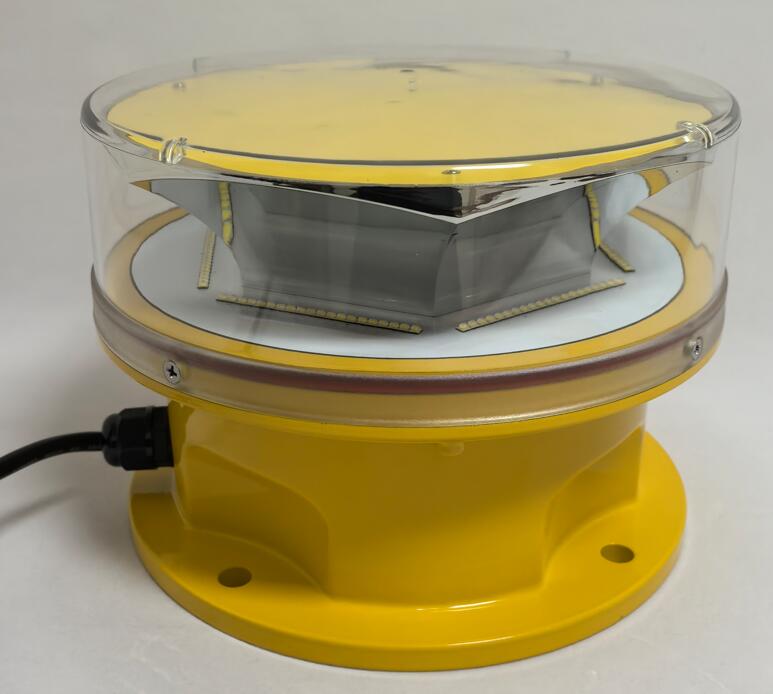Canada’s vast landscapes, bustling cities, and extensive air traffic require strict aviation safety measures. Among these, aircraft warning lights in Canada play a crucial role in preventing collisions between low-flying aircraft and tall structures. From skyscrapers to wind turbines and communication towers, these lights ensure visibility in all weather conditions. This article explores the regulations, types, and best practices for aircraft warning lights in Canada, highlighting their importance in maintaining safe airspace.
The Importance of Aircraft Warning Lights in Canada
Canada’s diverse geography—ranging from dense urban centers to remote northern regions—poses unique challenges for aviation safety. Aircraft warning lights in Canada are essential for:
Preventing mid-air collisions – Tall structures can be invisible to pilots at night or in poor weather.

Complying with Transport Canada regulations – Strict guidelines mandate lighting on obstructions.
Protecting both manned and unmanned aircraft – With the rise of drones, visibility is more critical than ever.
Aircraft Warning Lights in Canada
|
Regulations for Aircraft Warning Lights in Canada
Transport Canada, in alignment with international standards, enforces strict rules for obstruction lighting. Key requirements include:
1. Height Thresholds
Structures exceeding 45 meters (148 feet) must have aircraft warning lights in Canada.
Near airports, even shorter structures may require lighting.
2. Light Types and Colors
Red Obstruction Lights – Steady or flashing, used for nighttime visibility.
Medium-Intensity White Strobes – Used during daytime for high-visibility structures.
Aircraft Warning Lights Canada
|
Dual Lighting Systems – Some installations require both red and white lights for optimal detection.
3. Power and Reliability
Backup power systems are often mandatory to prevent light failure.
Regular maintenance and inspections are required to ensure compliance.
Types of Aircraft Warning Lights Used in Canada
Different structures demand different lighting solutions. The most common types include:
1. Low-Intensity Red Lights (LIRL)
Used for structures under 150 feet (45 meters).
Ideal for buildings, cranes, and telecom towers in less congested areas.
2. High-Intensity White Strobe Lights (HIWL)
Required for very tall structures (over 500 feet / 152 meters).
Highly visible in daylight and adverse weather.
3. Medium-Intensity Lights (MIRL & MIWL)
Red (MIRL) – For nighttime use on structures between 150-500 feet.
White (MIWL) – For daytime visibility on the same range.
4. LED-Based Systems
Energy-efficient and long-lasting.
Increasingly replacing traditional incandescent lights.
Best Practices for Installation and Maintenance
To ensure optimal performance of aircraft warning lights in Canada, follow these guidelines:
Proper Placement – Lights should be positioned at the highest points and spaced for 360-degree visibility.
Automatic Light Sensors – Adjust brightness based on ambient light to save energy.
Weather Resistance – Canadian winters demand durable, corrosion-resistant materials.
Regular Testing – Scheduled inspections prevent failures and ensure compliance.
Documentation – Keep records of installations and maintenance for regulatory audits.
Emerging Trends in Aircraft Warning Lighting
As technology advances, new trends are shaping aircraft warning lights in Canada:
Smart Lighting Systems – IoT-enabled lights that report failures in real-time.
Solar-Powered Solutions – Useful in remote areas without grid access.
Enhanced Visibility for Drones – Adjustable lighting to accommodate increasing UAV traffic.
Aircraft warning lights in Canada are a fundamental component of aviation safety, ensuring that tall structures do not become hazards to aircraft. By adhering to Transport Canada’s regulations and implementing the latest lighting technologies, businesses and municipalities can contribute to safer skies.
As Canada continues to grow, with more high-rise developments and wind farms, the role of aircraft warning lights in Canada will only become more critical. Investing in reliable, compliant systems today ensures safer airspace for future generations.

